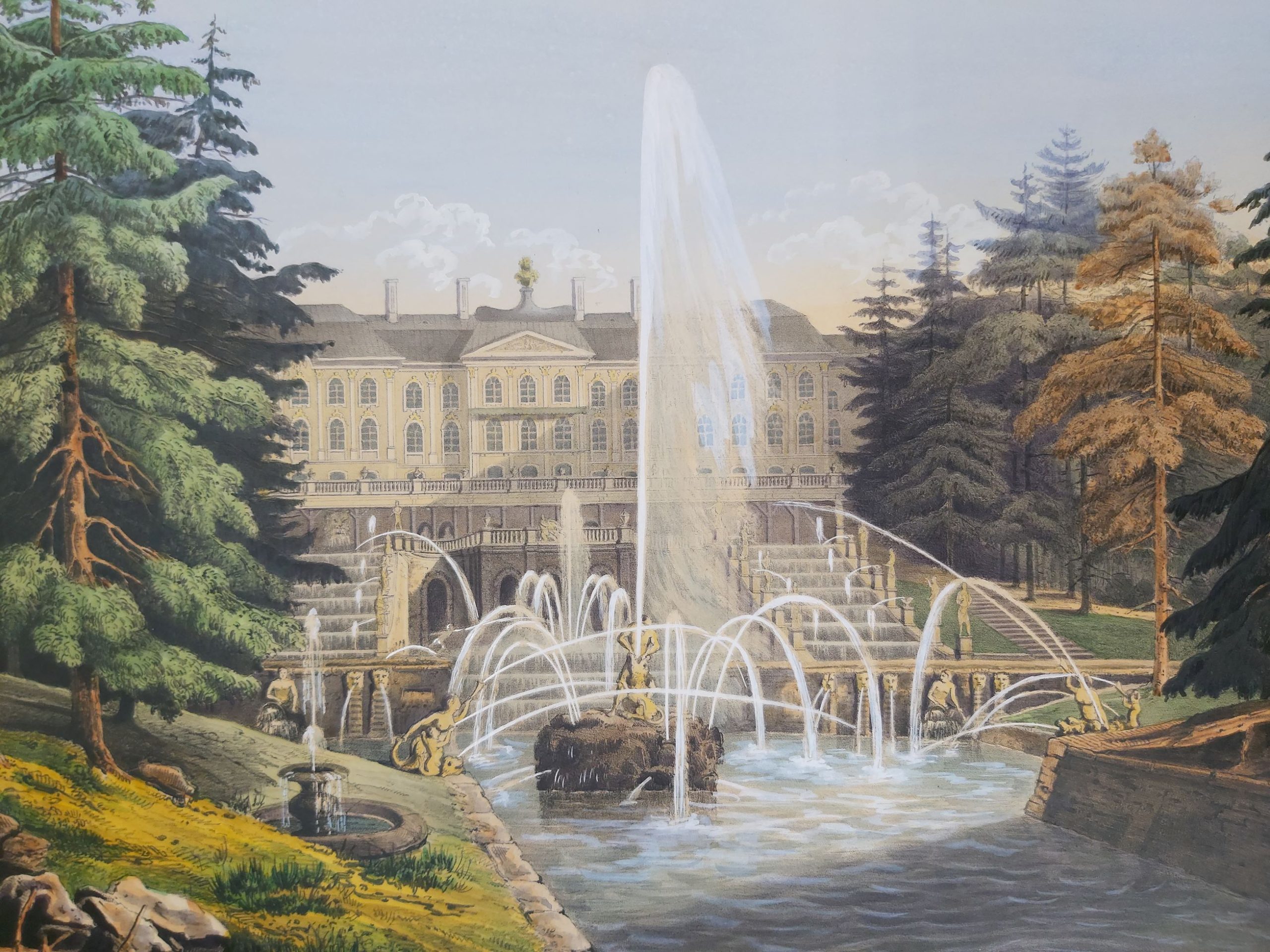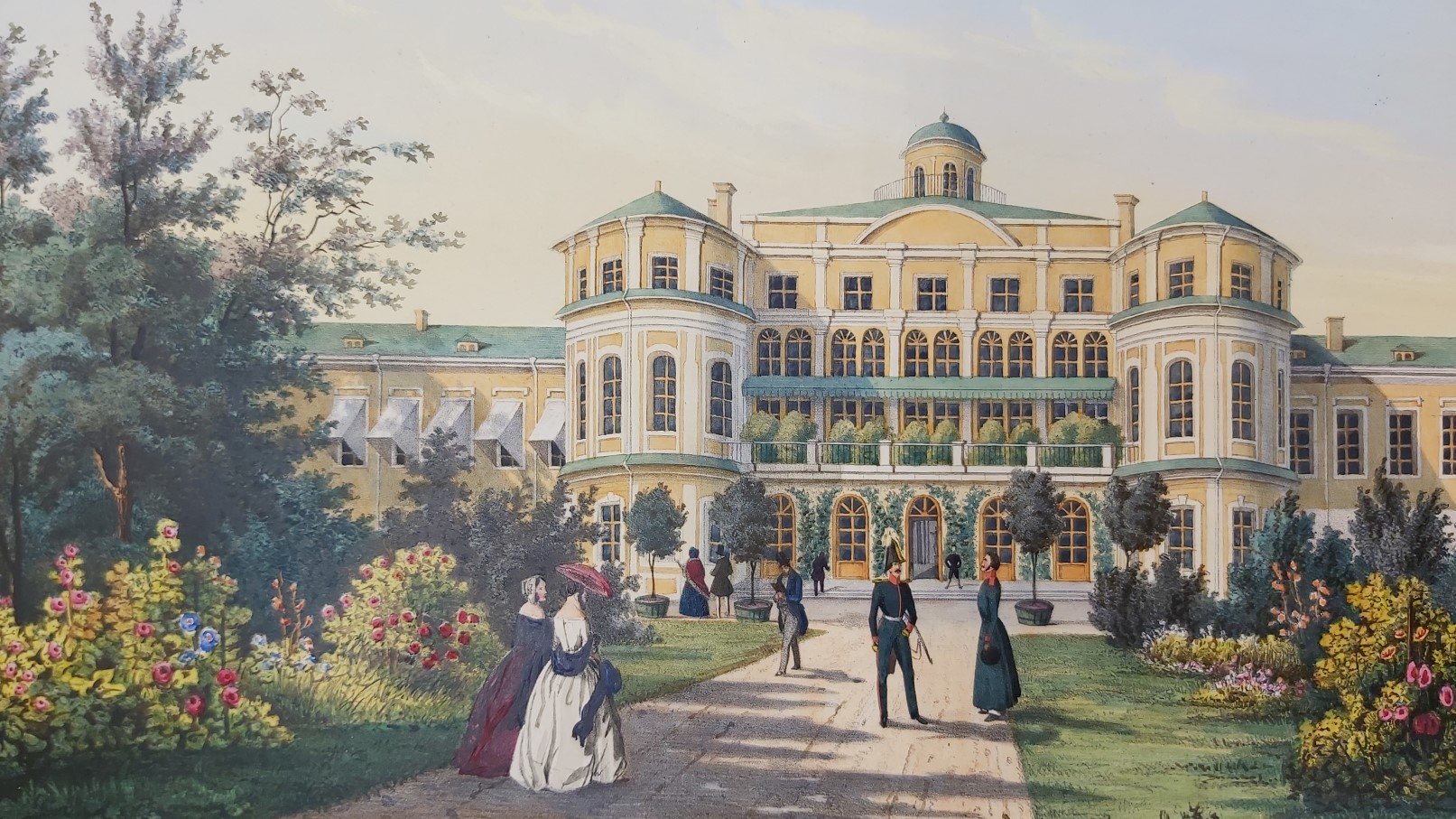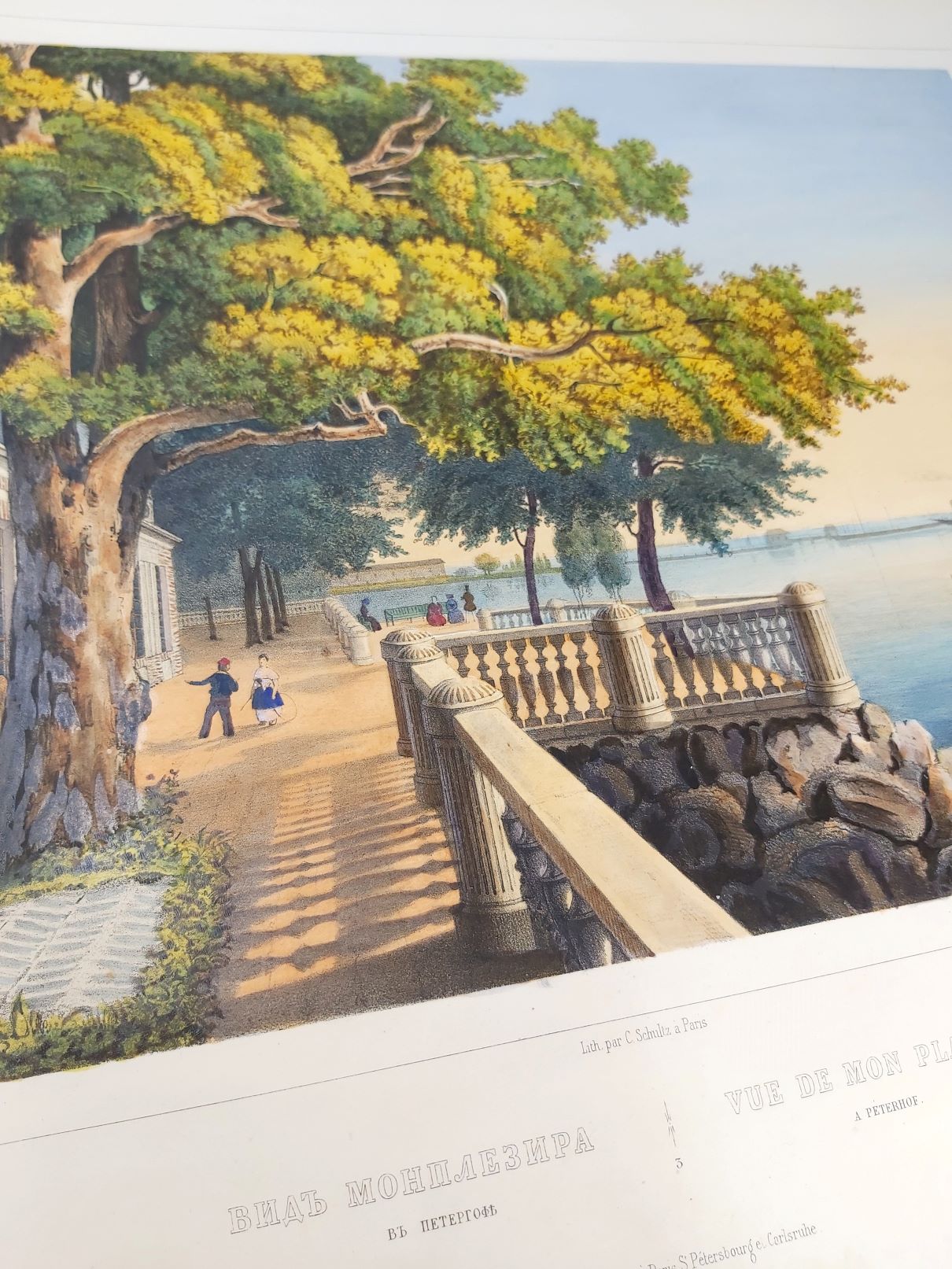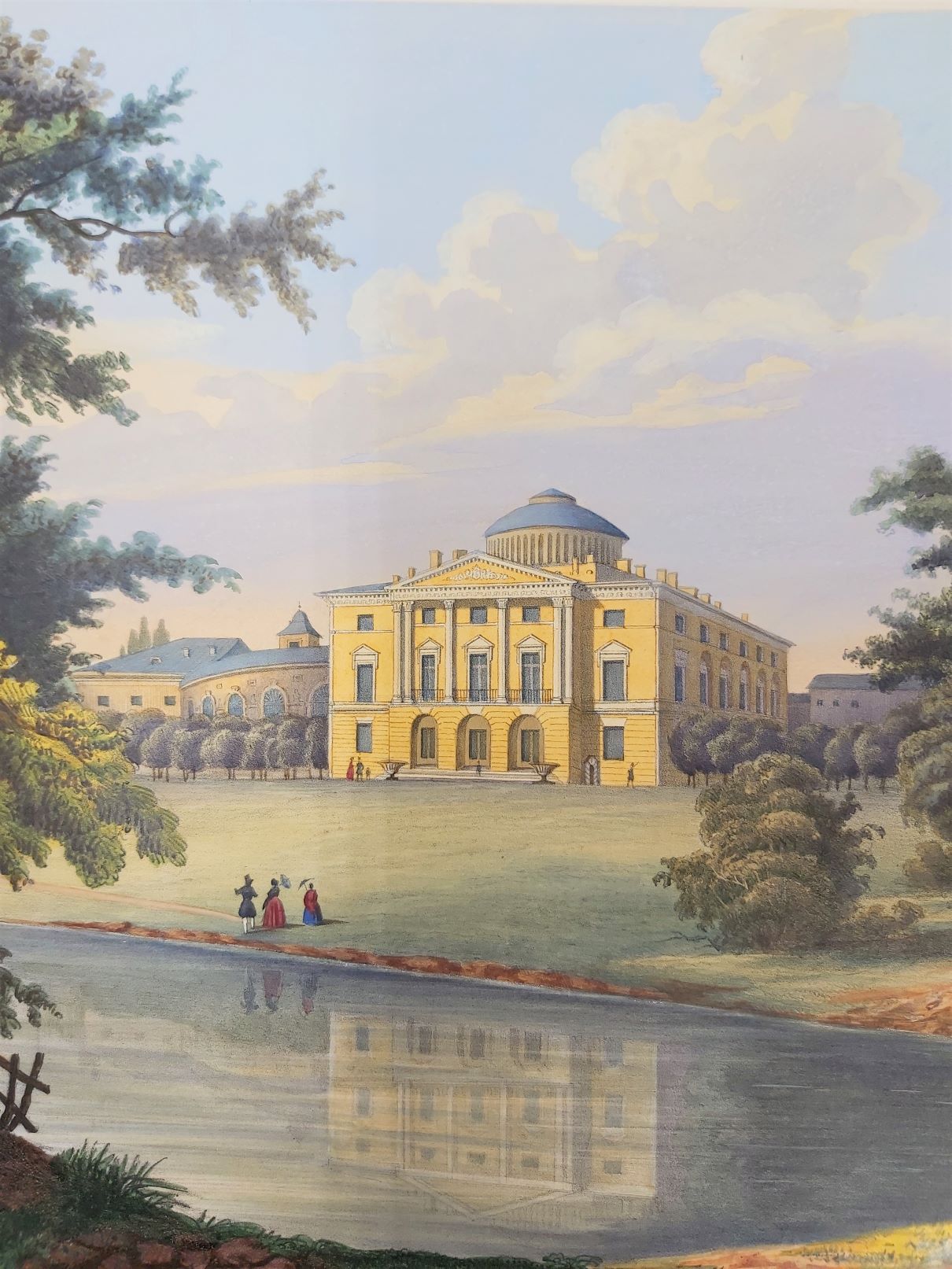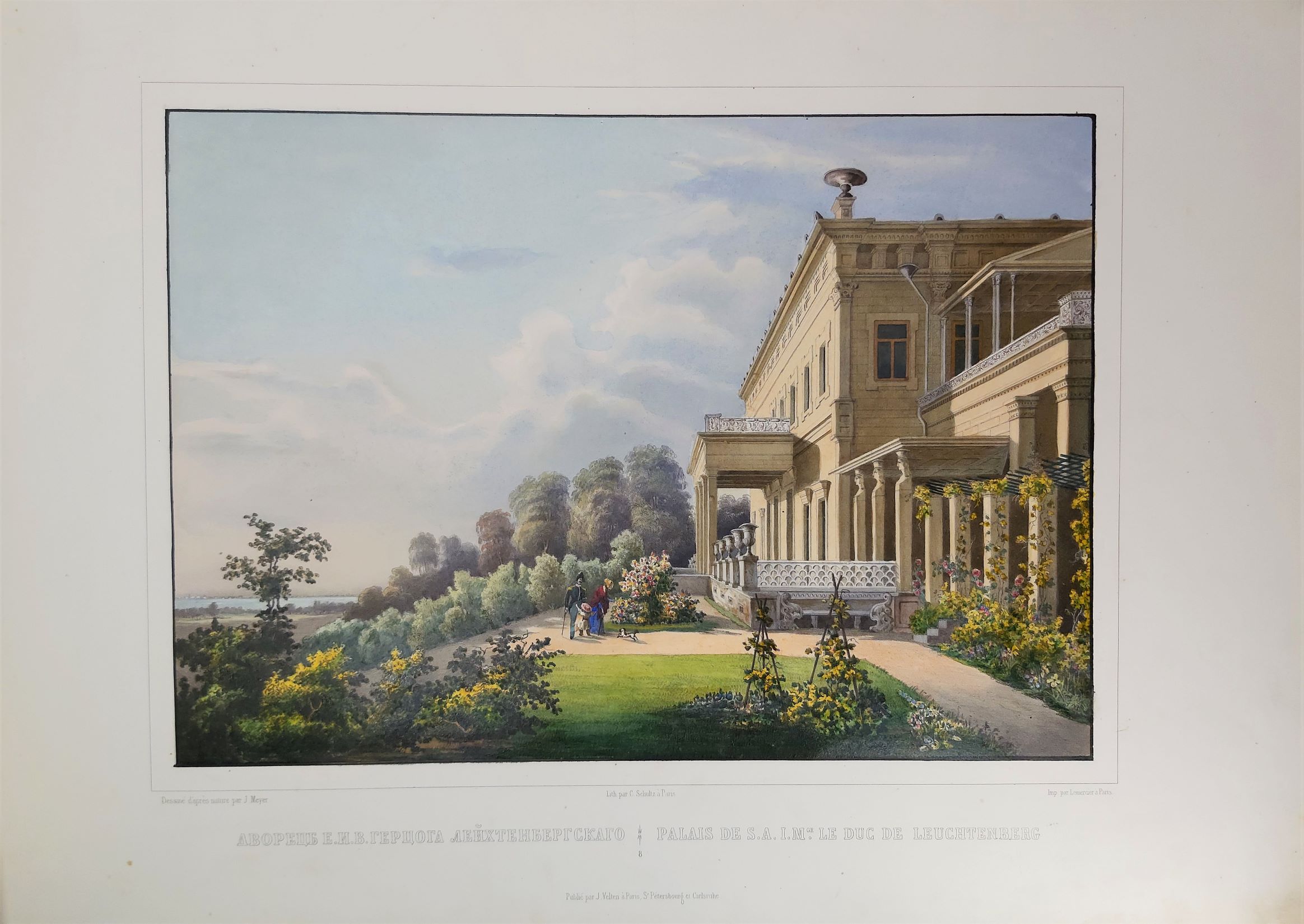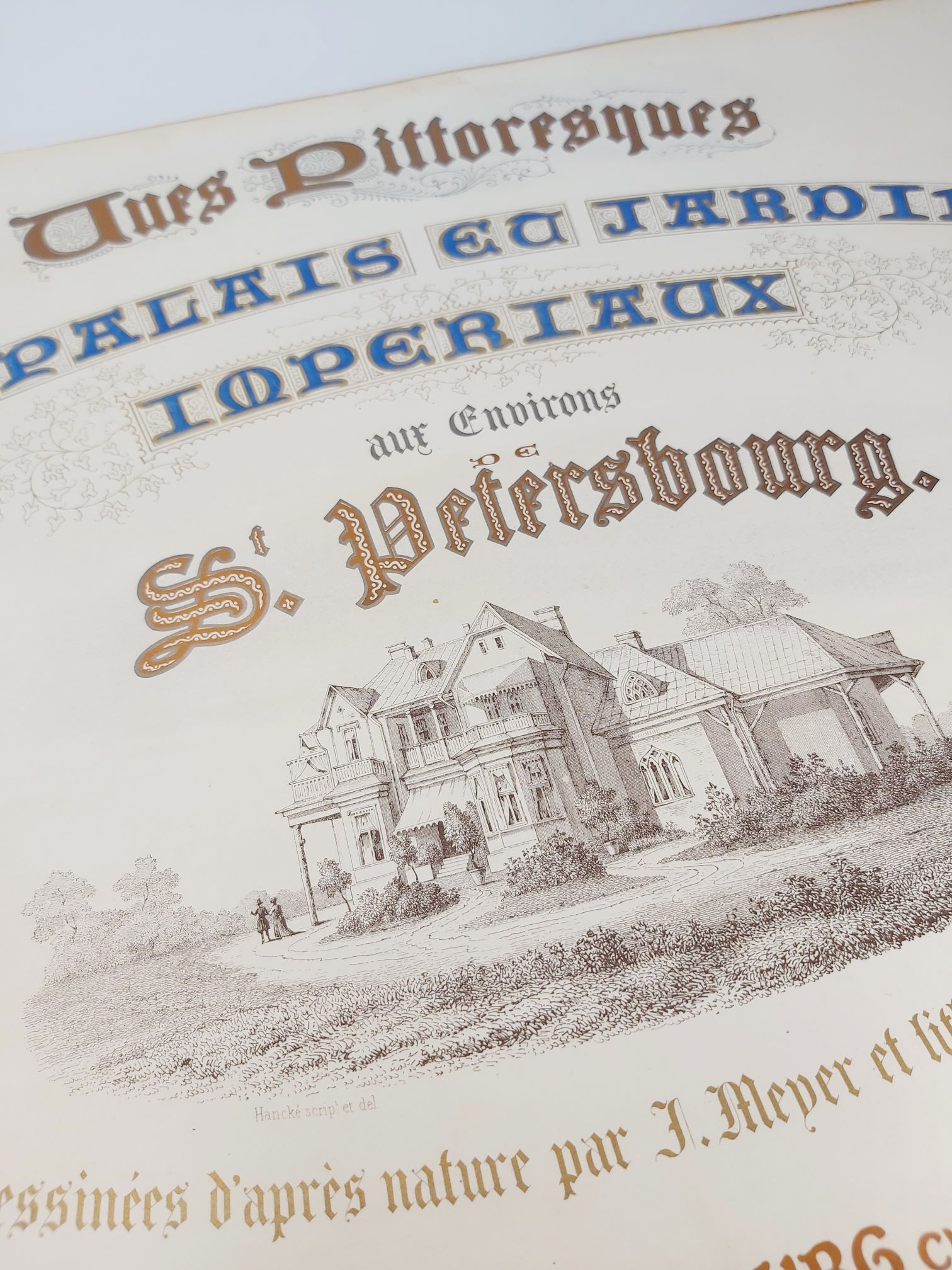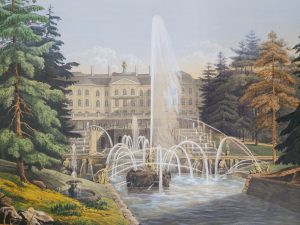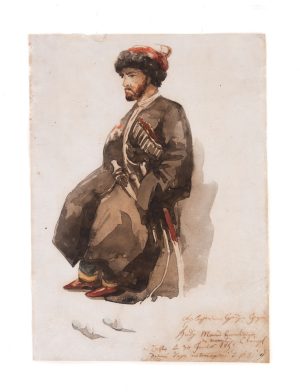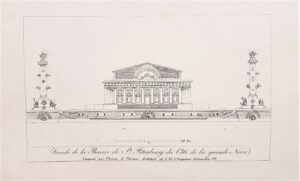Our Notes & References
“One of the best and most reliable collections of views of [St Petersburg] in the first half of the 19th century” (Makhlevich): a superb example of this large-format rarity, complete with its 22 lithographs, all in brilliant contemporary hand-colour.
The Swiss artist Johann Jakob Meyer (1787-1858), “one of the best watercolourists of his time” (Nagler, quote from Makhlevich) arrived in Russia in 1842 and stayed there for around three years. Supposedly, in the autumn of 1844 Tsar Nicholas I himself commissioned Meyer to create a series of watercolours of St. Petersburg and Peterhof, Peter the Great’s palace and Nicholas’ favourite residence. As a result, Meyer’s views include masterpieces of the Russian baroque, classical and neo-gothic architecture, set in various, sometimes romantic landscapes of St. Petersburg’s surroundings. Thanks to the combined skills of the artist, the lithographer and the colourists, each scene is rendered in radiant and fresh colours, with lovely play of light and soft shadows, hazy and distant perspectives and remarkable reflections of the palaces and trees in the Neva river, the Gulf of Finland and garden lakes.
“Preserved in very few copies, the album by Meyer [was of great help to] historians, […] architects and engineers as valuable reference material for restoring palaces and museums that were destroyed during the war” (Makhlevich). It includes for example and among other palaces, buildings and follies, the Pavlovsk Palace (1780s), a notable example of palladian architecture in Russia by Charles Cameron, destroyed in 1941-44, and since rebuilt – like Tsarskoe Selo, Elagin, and Monplaisir Palace (1714-23), Peter the Great’s favourite summer residence designed by the tsar himself.
A plate shows the Menshikov Palace in Oranienbaum (1711-27), whose unprecedented luxury exceeded Peterhof in its scale at the time: together with the garden and the surrounding buildings, it is “the largest surviving ensemble of Peter’s Baroque” (Raskin). Technological innovation is also present, with the Pavlovsk Railway Station (1838), the terminus of the first railway in the Russian Empire and at the same time “the first concert venue with orchestral music open to the public” (Kliuchnikova), destroyed during the WW2 and never rebuilt.
An international publishing entreprise, this album was produced by a major St. Petersburg publisher of German origin, Iosif Felten (Velten), lithographed by Karl Schultz and printed by the prominent Parisian lithographer Joseph Lemercier. The plates may well have been available individually or as complete collection, in black and white, tinted and in colour: this was added by hand and, considering the highest quality of this copy’s colour, most likely in Paris.
This suite was sometimes completed with a few other plates by other artists (like in Efremov-Siniagin-Gubar copy, which had only 2 plates in colour), and were also used by Velten in a simplified, smaller version to add to views of the St. Petersburg’s city centre. It is worth noting that these views belong to a rather small group of works focusing only on the palaces of the surroundings of the northern capital, without views of the city itself.
The work include the following views: 1. Peterhof Palace church, 2. Pavlovsk Palace, 3. Monplaisir Palace in Peterhof, 4. Imperial Palace on Elagin island, 5. Oranienbaum Palace viewed from the garden, 6. English Palace in Peterhof, 7. Imperial Palace in Oranienbaum, 8. Palace of Duke of Leuchtenberg, 9. The Great Fountain at Peterhof, 10. Coffee House in the Summer Garden in St Petersburg, 11. Palace of Strelna, 12. Alexander Palace in Tsarskoe Selo, 13. Tsarskoe Selo Palace church, 14. Colonnade of the Tsarskoe Selo Palace, 15. Tsarskoe Selo Palace viewed from the “Chinese Bridge”, 16. Palace of Grand Duke Mikhail Pavlovich on Kamennyi island, 17. Tsaritsyn Island in Peterhof, 18. Znamenskii Palace near Peterhof, 19. “The Cottage” palace in Alexandria park in Peterhof, 20. Gatchina Palace viewed from the courtyard [apparently mistakenly described as “from the garden”], 21. Gatchina Palace viewed from the garden, 22. The Pavlovsk railway station. This last plate depicts a soirée of the Russian gentry in the charming colonnade of the station, accurately showing different trends of local fashion, yet notably with the Russian flag coloured incorrectly.
Very rare, especially with all plates in colour: we could locate only one such copy in public institutions worldwide, in Harvard, (also bound in full (green) leather). The other two holdings in Worldcat may be from other editions and do not mention any colouring (Kunsthaus Zurich Library and TU Darmstadt). All other copies we could trace, including in Russian libraries, are either incomplete or with black-and-white plates. Bibliographical details are mostly deficient, if not wrong; only Solovev seems to have had a fully coloured copy, but in a half-leather binding only.
Bibliography
Solovev cat. 105, 444; Gubar 2361; Sinitsyn cat., 104 (“Bel et rare exemplaire”, only 20 pl., marked 75 rub.); not in Obolianinov.
Kliuchnikova E., “Magiia, baly i gudki parovozov: kak Pavlovskii vokzal izmenil istoriiu rossiiskoi muzyki”, Arzamas academy, Dec. 2020; Koshkarova L. K., Prigorody i okrestnosti Peterburga-Leningrada [XVIII-XX vv.]: katalog graviur i litografii v sobr. Gos. Publ. b-ki im. M. E. Saltykova-Shchedrina, Leningrad, 1968; Makhlevich Ia. L., I Elbrus na iuge, Moskva, Sov. Rossiia, 1991; Raskin A. G., Gorod Lomonosov. Dvortsovo-parkovye ansambli XVIII veka, Leningrad, 1981; Auguste Scheler, Catalogue de la bibliothèque de S. A. R. le Comte de Flandre, 1870, p. 272 (22 plates).
Physical Description
Landscape folio (35.6 x 53.9 cm). Title in chromolithograph integrating gilt and bronze lettering and with large vignette by Hancké, and 22 plates by Meyer lithographed by K. Schultz, captioned in French and Russian, numbered 1-22, with fine original hand-colouring with generous gum arabic highlights, some on beige paper, all leaves printed on thick card and with original tissue guards with corners ornately cut.
Binding
Contemporary full brown morocco, covers with rich, deep blind-stamped ornaments, gilt fillets and gilt lettering in French, flat spine with gilt ornament, green glazed endpapers, all edges gilt.
Condition
Binding rubbed with the occasional stain or scratch, spine head and foot restored, pastedowns showing the original glue, tissue guards with limited browner offset; occasional minor marginal soiling or tears, a couple of plates with minor marginal restoration, a handful at beginning with small reinforcement at gutter verso, and at end with the gouache lightly rubbed.

